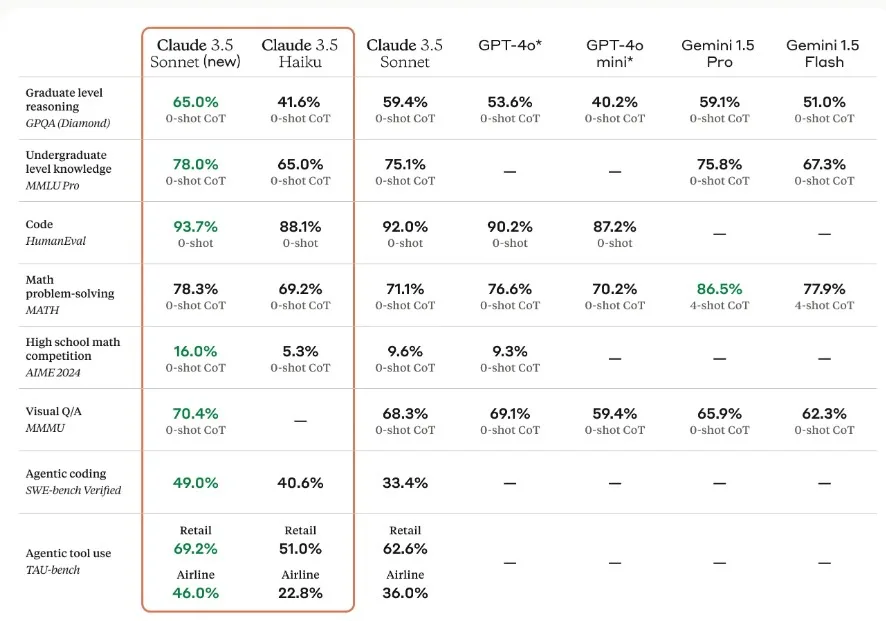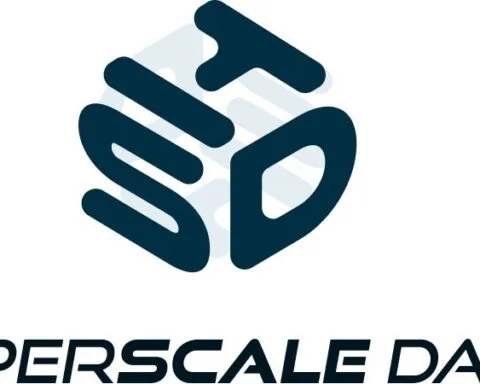Last Updated on October 23, 2024 8:28 am by Laszlo Szabo / NowadAIs | Published on October 23, 2024 by Laszlo Szabo / NowadAIs
Anthropic’s Computer Use Feature: AI That Works Like a Human – Key Notes
- Claude 3.5 Sonnet can now navigate computers like humans – moving cursors, clicking, and typing text through a beta API
- The feature focuses on common computer tasks like data entry, form filling, and research automation
- Safety measures include classifiers to prevent misuse and clear guidelines for developer implementation
Anthropic’s Sonnet 3.5 Evolve From Assistance to Autonomy
Introducing an upgraded Claude 3.5 Sonnet, and a new model, Claude 3.5 Haiku. We’re also introducing a new capability in beta: computer use.
Developers can now direct Claude to use computers the way people do—by looking at a screen, moving a cursor, clicking, and typing text. pic.twitter.com/ZlywNPVIJP
— Anthropic (@AnthropicAI) October 22, 2024
Anthropic, a leading AI research organization, has recently released their latest development in artificial intelligence: the computer use feature in its upgraded model, Claude 3.5 Sonnet. This innovative capability allows the AI to interact with computers in a manner similar to human users, navigating screens, clicking buttons, and typing text. This article delves into the intricacies of this feature, its implications for various industries, and the potential it holds for the future of work.
Historical Context
Artificial intelligence has evolved significantly over the past few decades. Initially, AI systems were designed to perform simple tasks, assisting users with basic functions. However, as technology advanced, the need for more sophisticated AI became apparent. This led to the development of models that could handle increasingly complex tasks, culminating in the introduction of models like Claude 3.5 Sonnet.
The Need for Computer Use
The integration of AI into everyday tasks has become a necessity in modern workplaces. Many processes, especially in office environments, involve repetitive actions that consume valuable time. By enabling AI to perform these tasks, companies can streamline operations and enhance productivity.
Understanding the Computer Use Feature
How It Works
The computer use feature enables Claude 3.5 Sonnet to interact with computer interfaces similarly to how a human would. This includes:
- Screen Analysis: Claude can interpret visual information displayed on a screen.
- Cursor Movement: The AI can move a cursor to click on buttons, links, and other interactive elements.
- Text Input: Claude can type text, filling out forms and executing commands.
This functionality is made possible through a sophisticated API that allows developers to integrate these capabilities into their applications.
Applications in Various Fields
The potential applications of the computer use feature are vast. Some of the key areas where it can make a significant impact include:
- Software Development: Automating repetitive coding tasks, allowing developers to focus on more complex problems.
- Data Entry: Streamlining data collection processes by allowing Claude to fill out forms and input information directly.
- Research: Facilitating open-ended tasks like data gathering and analysis, making research processes more efficient.
Current Limitations
Despite its potential, the computer use feature is still in its experimental stages. Some of the limitations include:
- Error-Prone Interactions: The AI may struggle with complex tasks that require nuanced understanding.
- Limited Capabilities: While Claude can perform basic tasks, more advanced actions, such as dragging windows or scrolling, may pose challenges.
Feedback Loop: Improving Through Developer Interaction
Beta Testing Phase
Anthropic has released the computer use feature in beta mode to gather feedback from developers. This collaborative approach allows the company to refine the model based on real-world usage and insights from users. By engaging with developers, Anthropic aims to identify pain points and areas for improvement.
Developer Insights
Many companies are already exploring the capabilities of Claude 3.5 Sonnet. For instance, platforms like Asana, Canva, and Replit are utilizing the AI for various tasks, from project management to software evaluation. The feedback from these developers is invaluable in enhancing the model’s performance and usability.
Continuous Improvement
Anthropic is committed to evolving the computer use feature. By analyzing feedback and user experiences, the organization plans to make iterative improvements, ensuring that Claude becomes more reliable and effective over time.
The Implications for the Workforce

Job Transformation
The introduction of AI capabilities like computer use raises questions about the future of work. While some fear that these advancements may lead to job displacement, others argue that they will transform roles rather than eliminate them.
- Augmentation Over Replacement: Many jobs will evolve to incorporate AI as a tool, enhancing human capabilities rather than replacing them.
- New Opportunities: The demand for AI literacy will grow, creating new roles focused on managing and collaborating with AI systems.
Industry-Specific Changes
Different industries will experience varying degrees of transformation:
- Tech Industry: Developers may find themselves working alongside AI to create more innovative solutions.
- Healthcare: Administrative tasks can be automated, allowing medical professionals to focus on patient care.
- Finance: Data analysis and reporting can be streamlined, improving decision-making processes.
Safety and Ethical Considerations
Responsible AI Development
As with any technological advancement, the deployment of AI raises ethical concerns. Anthropic is aware of these challenges and has implemented measures to ensure the responsible use of the computer use feature.
- Safety Protocols: The company has developed classifiers to identify potential misuse of the technology, particularly in sensitive areas like elections.
- User Consent: Developers are encouraged to inform end-users about the capabilities and risks associated with AI interactions.
Potential Risks
While the computer use feature holds promise, it also presents risks that must be managed:
- Misinformation: The ability of AI to generate content raises concerns about the spread of false information.
- Security Vulnerabilities: As AI interacts with sensitive data, the potential for breaches must be addressed.
Conclusion: Embracing the AI Industry
By enabling AI to interact with computers in a human-like manner, Anthropic is paving the way for new possibilities in automation and productivity.
As we move forward, it is essential to embrace the changes that AI brings while remaining vigilant about the ethical implications and potential risks. The journey of integrating AI into our daily lives is just beginning, and the future holds exciting prospects for collaboration between humans and machines.
Descriptions
- API (Application Programming Interface): A set of rules that allows different software programs to communicate with each other
- Beta Testing: An early release phase where developers try out new features to provide feedback before wider release
- Cursor Movement: The ability of the AI to control and move the computer’s pointer to specific locations on screen
- Screen Analysis: The AI’s capability to understand and interpret what’s displayed on a computer monitor
- Classifier: A system that categorizes and filters content to identify potential misuse or harmful activities
Frequently Asked Questions
- How does Anthropic’s Computer Use Feature work in practical terms?
The feature enables AI to interact with computer interfaces just like a human would. It can see what’s on the screen, move the cursor to specific locations, click on elements, and type text where needed. The system processes visual information from the screen and can execute basic computer commands. This capability is accessed through an API that developers can integrate into their applications. - What safety measures are in place for Anthropic’s Computer Use Feature?
Anthropic has implemented several layers of safety protocols in their computer use feature. They’ve developed specific classifiers to detect potential misuse of the technology. The system includes built-in safeguards particularly focused on sensitive areas like election-related content. Developers are required to maintain transparency with end-users about AI interactions. The feature is currently in beta, allowing for careful monitoring and adjustment of safety measures. - What industries can benefit from Anthropic’s Computer Use Feature?
The feature has applications across multiple sectors of the economy. Software development teams can use it to handle repetitive coding tasks and testing procedures. Healthcare organizations can apply it to streamline administrative work and data entry. Financial institutions can leverage it for data analysis and report generation. The system’s versatility makes it valuable for any industry dealing with routine computer-based tasks. - What are the current limitations of Anthropic’s Computer Use Feature?
The feature currently faces several technical constraints in its beta phase. It may encounter difficulties with complex tasks requiring nuanced understanding or context. Some advanced computer interactions like window manipulation or precise scrolling can be challenging for the system. The feature works best with straightforward, well-defined tasks and may need human supervision for more sophisticated operations. - How does Anthropic’s Computer Use Feature impact job roles?
Rather than replacing jobs, this feature is designed to transform how people work. It serves as a tool to handle repetitive tasks, allowing workers to focus on more complex responsibilities. The technology creates new opportunities for roles focused on AI system management and oversight. Jobs will evolve to incorporate AI collaboration rather than being eliminated by it.








